First of all, what the hell is a gross profit margin? It is an accounting formula to check your sales financial health. People often ask “are gross profit and gross profit margin the same?”. The answer is no.
Your gross profit is a valued number and gross margin is a percentage. It is relatively simple to calculate this percentage formula. It is important to know your gross profit margin because it’s a great way to track how efficiently your business makes money from your product or service. The main question that isn’t as easy to answer is, “Is my gross profit margin good?”
The short answer to this question is that determining whether a gross profit margin is good depends on your industry, product or service, financial climate or even your competition. Though before you start digging deep into what the average gross profit margin by industry is, it is vital to understand the fundamentals of how to calculate your gross profit margin.
If you are worried about not knowing this, rest assured that even Richard Branson needed the basics of gross profit explained to him when he was building the billion-dollar Virgin Group.
How gross profit and gross profit margin is calculated?
The first step is to check your own knowledge of “What’s gross profit?” and “What’s net profit?”. This is what Richard Branson needed to be explained to him mid board room meeting! The difference between gross and net profit is this:
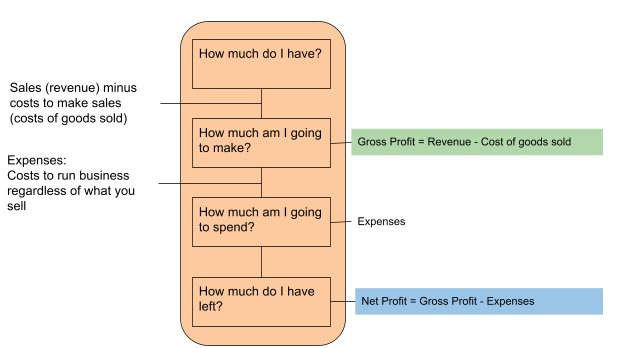
Gross profit comes before your net profit. Gross profit is used to analyse how much cash you are making from sales minus the cost of goods sold. Net profit is the result of gross profit minus general business expenses. As we start to look at the importance of knowing your gross profit margin make sure you are clear on what contributes to your cost of goods sold and what fits into the costs to run your business.
If you need additional help with calculating gross profit see the example below.

How do I calculate my gross profit margin?
You calculate gross profit margin by dividing your gross profit by your revenue and then multiply it by 100. This will provide you with a percentage value.


The above formula and example are great for theory but you can simply use a gross profit margin calculator from a google search or create your own simple formula in an excel or google spreadsheet. Here is a simple one to save you time.
How do I check my gross profit margin?
You have two options. First is to perform an analysis using a Cost of Goods Sold Calculator. Below is an example of a useful calculator to discover individual gross profit margins per product in your business. You may already have costs of goods sold information available from your balance sheet. This is a great time to utilise this data and reflect on your inputs currently being used.
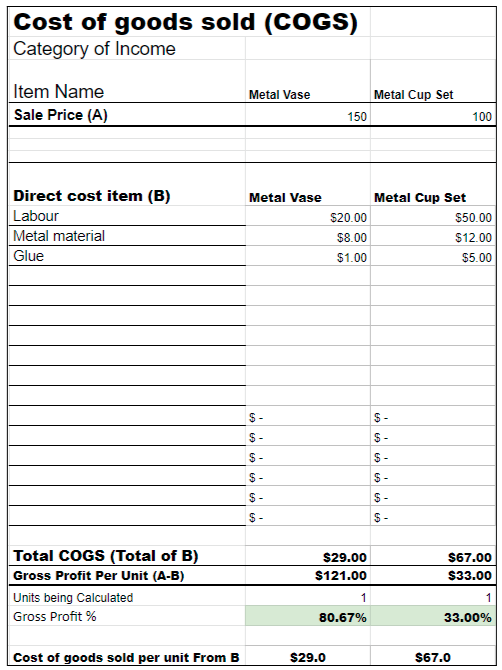
What gross profit margin is good?
A good place to start is to understand your industry benchmark. There is a lot of data and information that exists to determine each year how each industry is performing. For example, the below data shows the varying range of industries found from an online search.
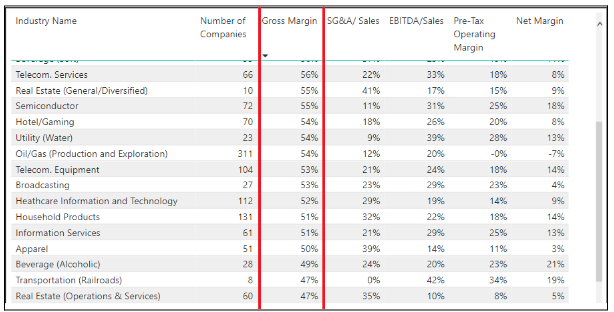
Once you have found your relevant industry benchmark it’s time to analyse your own gross profit margin. If your industry has a lower gross profit margin average it is important to know that this indicates a requirement for a higher volume of sales.
If a jeweller sells diamond engagement rings at a 60% gross profit margin, they only need to make and sell a few rings each month to be sustainable, however, if a seamstress sells kid’s clothes at a 20% profit they may need to sell hundreds of pieces to be sustainable.
Another health check is that when your revenue increases your cost of goods sold (COGS) should increase proportionately. If you find yourself asking “Why did the gross profit margin decrease?” then you need to check that your COGS isn’t increasing faster than your revenue growth. If it is then you need to act quickly to figure out what is causing this trend and solve it.
Below is an example of a company that is able to maintain its gross profit across a year. Though you can see the trend of gross profit margin declining as revenue increases. This is caused by growth occurring but no improvements being made within COGS inputs which causes a negative gross margin trend.
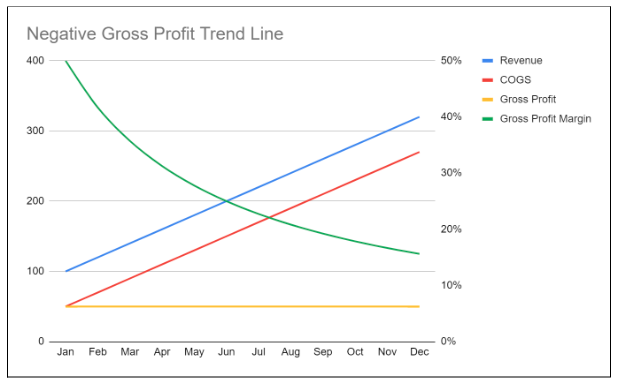
Compare this to the graph below of a business that is able to improve its COGS inputs over time. You can see the trend line increasing slowly over each month. This would be the ideal scenario to occur but realistically a business would see a varying trend until operations mature. It’s important to look beyond your basic numbers and maintain a positive trend line by finding ways to improve gross profit margins as you grow.
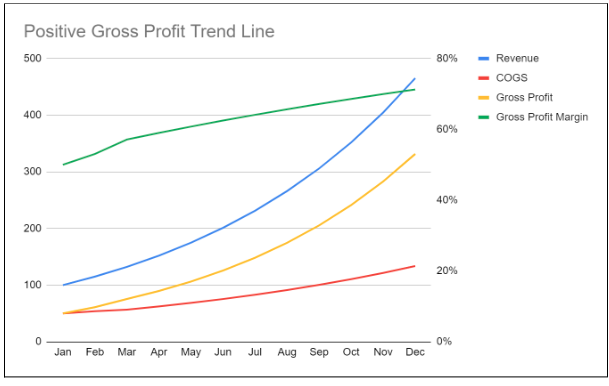
Our challenge to you…
Now that you understand what gross profit margin is good and why it’s an important statistic to know, your action is to calculate what this number is for your business and compare it to your industry benchmark.
If you find that your gross profit margin is close to the ideal standard for your industry, well done! Make sure you track and monitor this over time to ensure your margin is growing rather than shrinking. On the other hand, if you find that your gross profit margin is falling short of the industry benchmark, look for ways to decrease your cost of goods or consider increasing your prices.
For more information about managing your business’s cash flow and tracking performance, check out our Cash Flow Management course.



